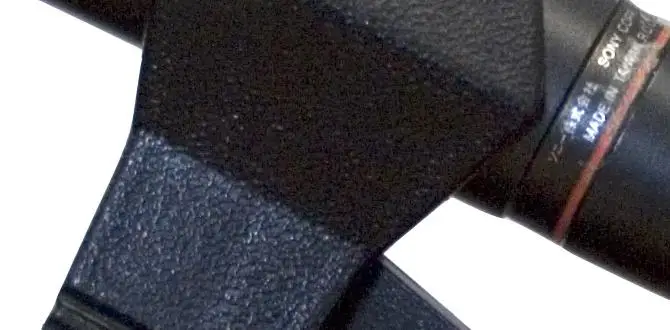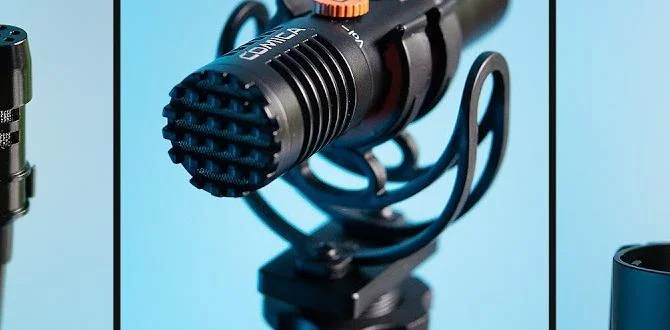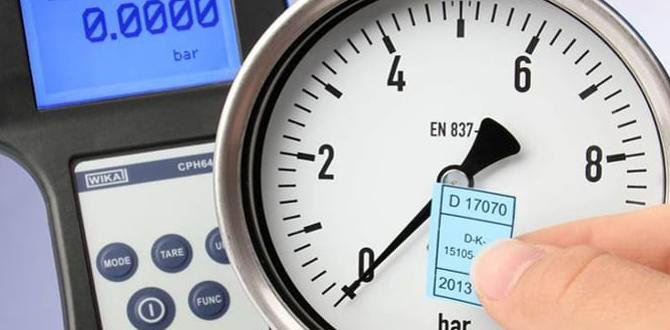Discover the easiest way to set up your Roku TV or Fire TV! This guide breaks down the simple steps for both, helping you get streaming in minutes with clear instructions and helpful tips for a smooth, enjoyable experience right out of the box.
Getting a new smart TV or streaming device is exciting! But sometimes, the setup process can feel a little… overwhelming. You might be wondering which buttons to press, how to connect to Wi-Fi, or even just where to start. If you’ve just unboxed a Roku TV or a Fire TV, you’re probably eager to start watching your favorite shows and movies. Don’t worry, it’s often much simpler than you think. We’re here to guide you through setting up your Roku TV or Fire TV step-by-step. You’ll be surfing through channels and streaming services in no time!
Roku TV vs Fire TV Setup: Getting Started
So, you’ve got a new Roku TV or a Fire TV, and the box is open. Fantastic! Both platforms offer a world of entertainment, but their initial setup has a few distinct flavors. The good news? They’re both designed for ease of use. Think of this as your friendly guide to bypassing any potential tech headaches and diving straight into the fun stuff. We’ll walk you through the essential steps for each, ensuring you get up and running smoothly.
What’s Inside the Box?
Before you begin, it’s wise to check that you have everything you need. While the specific contents can vary slightly between brands and newer models, a typical Roku TV or Fire TV will include:
- The TV or streaming device itself.
- A remote control (often with batteries included).
- A power cord.
- A stand or mounting hardware (for TVs).
- Quick start guide and important safety information.
Make sure you have a stable internet connection (Wi-Fi is usually the easiest) and, if needed, an HDMI cable for connecting external devices like soundbars or gaming consoles.
Setting Up Your Roku TV
Roku TVs bring a straightforward and user-friendly interface to your living room. Setting one up is generally a breeze. Just follow these steps:
Step 1: Unpack and Connect Power
Carefully remove your Roku TV from the box. If it’s a TV, attach the included stand or mount it to the wall according to the manufacturer’s instructions. Once the TV is in place, plug the power cord into the TV and then into a wall outlet.
Step 2: Turn On and Initial Scan
Press the power button on your TV or the remote. The Roku logo will appear, followed by a welcome screen. The TV will likely prompt you to select your language. This is also where your TV will start scanning for available TV channels if you’ve connected an antenna or cable. You can skip this for now if you plan to use only streaming apps.
Step 3: Connect to Your Wi-Fi Network
This is a crucial step for smart functionality. Your Roku TV will detect available Wi-Fi networks. Select your home network from the list and enter your Wi-Fi password using the on-screen keyboard and remote. Ensure you type your password correctly, as it’s case-sensitive.
Tip for a Stronger Signal: For the best streaming experience, ensure your router is in a central location and not too far from your TV, or consider using a wired Ethernet connection if your TV has an Ethernet port. According to the Federal Communications Commission (FCC), a stable internet connection is key for optimal online service performance.
Step 4: Link Your Roku Account
You’ll be prompted to link your Roku account. If you don’t have one, you can create one for free on your computer or smartphone by visiting my.roku.com. You’ll then enter a code displayed on your TV screen at the Roku website. This account is used to manage your devices, subscriptions, and app purchases.
Step 5: Automatic System Updates
Once linked, your Roku TV will automatically check for and install any available system updates. This ensures you have the latest features and security patches. This might take a few minutes. Please do not unplug the TV during this process.
Step 6: Add Your Favorite Channels (Apps)
After the updates, you’ll be taken to the Roku Home screen. Here, you can browse and add streaming channels (apps) like Netflix, Hulu, Disney+, and many more from the Roku Channel Store. Simply select “Add channel,” and it will appear on your home screen.
Step 7: Customize Your Home Screen
You can rearrange the order of your channels on the home screen to prioritize your most-used ones. Select a channel, press the “*” button on your remote, and choose “Move Channel.”
Setting Up Your Fire TV
Amazon’s Fire TV platform offers a vast library of content with its own set of easy-to-follow setup steps. Whether it’s a Fire TV Edition TV or a separate Fire TV Stick/Cube, the process is quite similar.
Step 1: Unpack and Connect Power/HDMI
Unpack your Fire TV device. If it’s a Fire TV Edition TV, set it up as you would any other TV. For a Fire TV Stick or Cube, connect it to an available HDMI port on your TV. Then, connect the power adapter to the Fire TV device and plug it into a wall outlet. Ensure your TV is set to the correct HDMI input.
Step 2: Turn On and Language Selection
Turn on your TV. The Fire TV interface should appear. Use your Fire TV remote to select your preferred language. Press the select button on the remote.
Step 3: Connect to Wi-Fi
Similar to Roku, your Fire TV needs an internet connection. It will scan for available Wi-Fi networks. Select your home network and enter your Wi-Fi password using the on-screen keyboard. Double-check your password for accuracy.
Wi-Fi Best Practices: For seamless streaming and app downloads, ensure your Wi-Fi password is correct. If you encounter persistent connection issues, restarting your router can often help. You can find more advice on improving your home network on resources like the FTC consumer advice page.
Step 4: Pair Your Remote
Your Fire TV remote may need to be paired. Usually, it pairs automatically when you turn on the device. If not, press and hold the Home button on the remote for about 10-20 seconds until the indicator light flashes. Follow any on-screen prompts.
Step 5: Sign In or Create an Amazon Account
You’ll need to sign in with your existing Amazon account or create a new one. This is how Amazon links your purchases, subscriptions (like Prime Video), and app recommendations to your device. Enter your Amazon credentials using the remote.
Step 6: System Updates
Your Fire TV will automatically check for and download any necessary software updates. This process is vital for security and performance enhancements. Allow it to complete.
Step 7: Explore and Download Apps
Once the setup is complete, you’ll arrive at the Fire TV home screen. You can navigate through recommended content, search for apps like Netflix, Prime Video, Disney+, and YouTube, or visit the Appstore to discover and download more. Select an app and choose “Get” or “Download.”
Step 8: Voice Control with Alexa
Many Fire TV remotes come with a microphone button. Press and hold this button to activate Alexa. You can ask her to find movies, play music, open apps, check the weather, and more. Give it a try to see how convenient it is!
Roku TV vs Fire TV: Key Differences in Setup & Use
While both platforms aim for simplicity, there are a few nuances to consider, especially when you’re just starting out. Here’s a quick comparison to help you understand what to expect:
| Feature | Roku TV Setup | Fire TV Setup |
|---|---|---|
| Account Requirement | Roku Account (free, for managing channels and settings) | Amazon Account (required for content, apps, and purchases) |
| Interface Navigation | Simple grid layout, easy to customize. Emphasis on channels. | Content-focused home screen with rows of recommendations. Alexa integration prominent. |
| Voice Assistant | Limited built-in voice search through the remote. | Integrated Alexa for voice commands and smart home control. |
| App Store | Roku Channel Store (large selection, many free options) | Amazon Appstore (vast selection, includes many Android apps) |
| Content Discovery | Focus on browsing channels and specific app content. | Heavily emphasizes recommendations based on viewing history and user profiles. |
| Initial Setup Complexity | Generally considered very straightforward, minimal steps. | Slightly more involved due to Amazon ecosystem integration, but still user-friendly. |
Both systems are excellent choices for smart TV enthusiasts. Roku is often praised for its pure simplicity and a huge variety of apps, while Fire TV shines with its deep integration of Amazon services and Alexa for voice control. The setup process for both is designed to be completed in under 15 minutes for most users.
Choosing Your Streaming Style
When you’re setting up, think about what you value most. Do you want the absolute most straightforward, no-fuss interface? Roku might be your pick. Are you already heavily invested in the Amazon ecosystem, or do you love having a built-in voice assistant like Alexa to control things? Fire TV could be a better fit.
Troubleshooting Common Setup Issues
Even with the simplest setups, occasional hiccups can occur. Here are a few common issues and their quick fixes:
- Wi-Fi Connection Problems: Double-check your password. Restart your router and modem. Try moving closer to the router. Ensure your router is using a common frequency band (like 2.4GHz or 5GHz) that your device supports.
- Remote Not Working: Ensure the batteries are correctly inserted and charged. Try re-pairing the remote (check your device’s manual for specific instructions).
- App Not Loading/Crashing: Ensure your device has the latest software updates. Try uninstalling and then reinstalling the problematic app. Restart the TV or streaming device.
- Sound or Picture Issues: Check your HDMI cables are securely plugged in. Try a different HDMI port or cable. Ensure the correct input source is selected on your TV.
- Account Linking Errors: Verify you are using the correct email and password for your Roku or Amazon account. Ensure your device is connected to the internet.
If you continue to experience issues, consulting the official support pages for Roku or Amazon is always a good next step. For example, Roku’s support site and Amazon’s Fire TV support offer comprehensive guides and contact information.
Frequently Asked Questions (FAQ)
Q1: Do I need an internet connection to set up my Roku TV or Fire TV?
A: Yes, an internet connection (Wi-Fi or Ethernet) is required for both Roku TV and Fire TV setup. It’s necessary for activating the device, downloading updates, and accessing streaming apps.
Q2: Can I use a Roku TV or Fire TV without a Roku or Amazon account?
A: You can set up the basic TV functions (like watching antenna TV) without an account. However, to access smart features, streaming apps, and personalize your experience, you will need to create and link either a Roku account (for Roku TV) or an Amazon account (for Fire TV).
Q3: How long does the setup process usually take?
A: For most users, the initial setup for both Roku TV and Fire TV takes between 10 to 20 minutes, depending on your internet speed and how quickly you can enter passwords.
Q4: Can I connect my game console or Blu-ray player to my Roku TV or Fire TV?
A: Absolutely! If your Roku TV or Fire TV has available HDMI ports, you can connect game consoles, Blu-ray players, soundbars, or any other device that uses an HDMI connection. Just select the appropriate HDMI input on your TV.
Q5: Are Roku TVs and Fire TVs the same as standard smart TVs?
A: Yes, if it’s a “Roku TV” or “Fire TV Edition” TV, it means the Roku or Fire TV smart platform is built directly into the TV. If you bought a separate Roku device (like a Stick) or Fire TV device (like a Stick or Cube), you can plug it into any TV with an HDMI port to make it a smart TV.
Q6: What’s the difference between a Roku TV and a Fire TV Stick?
A: A Roku TV or Fire TV Edition is a television with the respective smart platform integrated. A Roku device (Stick, Express, Ultra) or Fire TV device (Stick, Cube) is a separate accessory that you plug into any TV to add smart capabilities.
Q7: Do I have to pay for Roku or Fire TV apps?
A: Many apps are free to download and use (like YouTube, Pluto TV, or Tubi). However, some popular streaming services (like Netflix, Disney+, Hulu) usually require a paid subscription. There might also be some paid apps available in their respective stores.
Conclusion
Setting up your Roku TV or Fire TV doesn’t have to be a chore. We’ve walked through the straightforward steps for both platforms, from unpacking to connecting to Wi-Fi and signing into your accounts. Whether you choose the straightforward simplicity of Roku or the feature-rich integration of Fire TV with Alexa, you’re just minutes away from enjoying a vast world of entertainment. Bookmark this guide, and you’ll have your new smart TV or streaming device ready to go in no time. Happy streaming!





